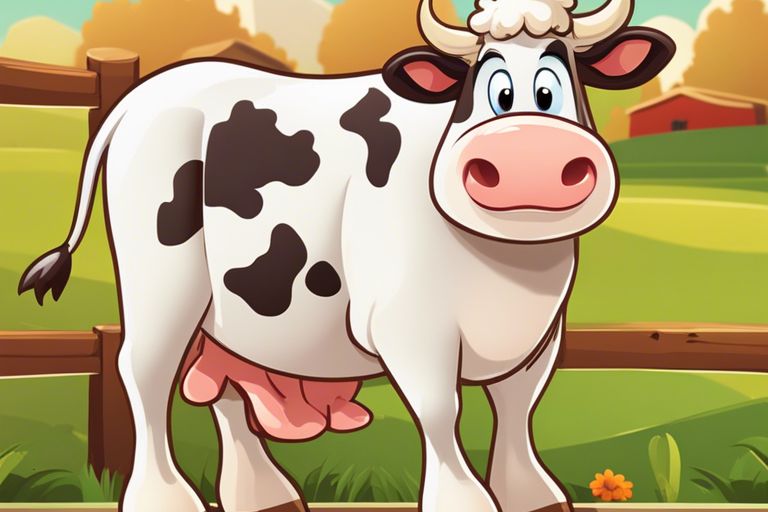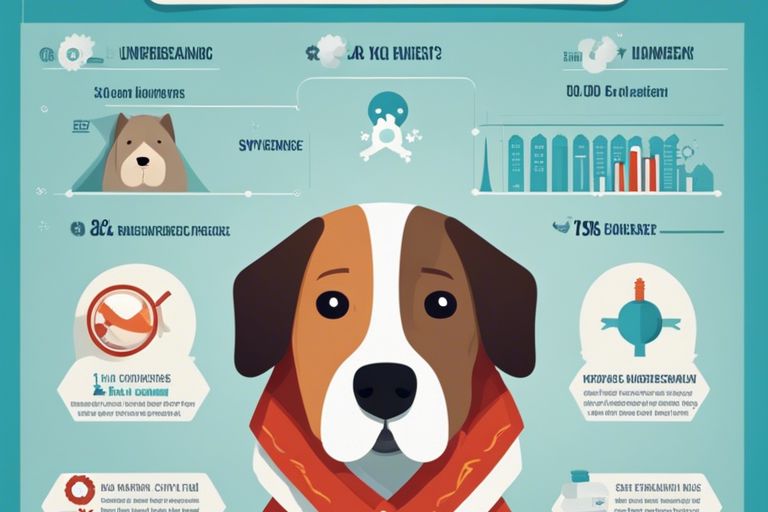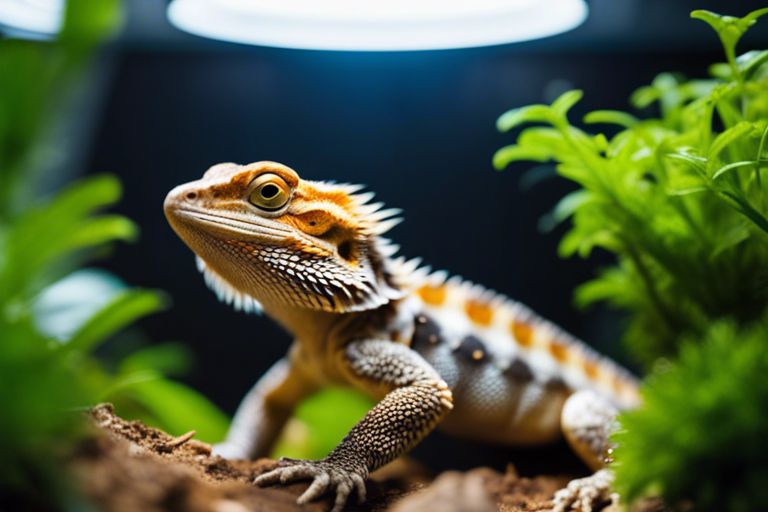Greetings, curious minds! Today, I’m here to shed light on the lesser-known anatomical fact about our bovine friends – their stomachs. You may be surprised to learn that a cow doesn’t just have one stomach, but four! These four stomachs, known as the rumen, reticulum, omasum, and abomasum, play a crucial role in the digestive process of a cow. Understanding the anatomy of a cow’s stomachs is not only fascinating but also important for ensuring their health and well-being. So, let’s dive into the intricate details of how many stomachs a cow has and how they function.
Key Takeaways:
- Four stomachs: Contrary to popular belief, cows do not actually have multiple stomachs, but rather one stomach with four compartments.
- Complex digestive system: Cows have a complex digestive system that allows them to efficiently break down and absorb nutrients from their plant-based diet.
- Rumen function: The rumen, the largest compartment of the cow’s stomach, serves as a fermentation chamber where bacteria and other microbes break down fibers and produce nutrients for the cow.
- Importance of microorganisms: The microorganisms in a cow’s stomach play a crucial role in the digestion process, helping the cow extract essential nutrients from its food.
- Health implications: Understanding the anatomy of a cow’s stomach is important for ensuring their well-being and monitoring their digestive health.
Anatomy of a Cow’s Stomachs
To understand a cow’s digestive system, it’s important to learn about the anatomy of their stomachs. As a ruminant animal, a cow actually has four stomach compartments, each playing a crucial role in the digestion process. These compartments are the rumen, reticulum, omasum, and abomasum. Each of these stomachs has a unique function that contributes to the cow’s ability to efficiently break down and utilize plant materials.
Rumen
The rumen is the largest compartment of a cow’s stomach and can hold up to 50 gallons of partially digested food. It is the primary site of fermentation and microbial digestion, where symbiotic bacteria and protozoa break down cellulose and other fibrous materials in the cow’s diet. This process produces volatile fatty acids, which serve as a major energy source for the cow. The rumen also allows the cow to regurgitate and re-chew its food, further breaking down the plant matter for optimal digestion.
Reticulum
The reticulum, also known as the “honeycomb,” is located just below the rumen and acts as a filter for any large particles that the cow may have ingested. It also plays a role in the regurgitation process, helping to form the food into smaller portions for the cow to chew. Additionally, the reticulum contracts to help move food through the digestive system, aiding in the overall digestive process.
Omasum
The omasum is often referred to as the “many plies” due to its numerous leaves or folds. This compartment works to further squeeze out excess moisture from the partially digested food, as well as absorb volatile fatty acids and other nutrients. The omasum essentially acts as a filter, ensuring that only the most essential nutrients pass through to the abomasum for further digestion and absorption.
Abomasum
The abomasum is the true stomach of the cow, functioning similarly to the stomach of non-ruminant animals. Here, acidic digestive juices break down the remaining food particles and kill any remaining bacteria. This compartment is where protein digestion primarily takes place, and essential nutrients are absorbed into the bloodstream to nourish the cow’s body. The abomasum plays a critical role in the final stage of the digestive process, ensuring that the cow can utilize the nutrients from its diet effectively.
I hope the information I have provided gives you a better understanding of the anatomy of a cow’s stomachs.
The Function of Each Stomach
Clearly, understanding the function of each stomach in a cow is crucial to appreciating the complexity of its digestive system. Each of the cow’s four stomachs serves a specific purpose in the process of breaking down and extracting nutrients from its food.
Fermentation
During the fermentation process in the first stomach, also known as the rumen, microorganisms break down the fibrous plant material that the cow consumes. This allows the cow to derive nutrients from cellulose and hemicellulose, which would otherwise be indigestible.
Grinding
The second stomach, known as the reticulum, acts as a continuation of the rumen and is involved in the grinding and further breakdown of food particles. This ensures that the food is prepared for the next stage of digestion.
Absorption
In the third stomach, the omasum, water and nutrients are absorbed into the bloodstream from the partially digested food. This crucial step allows the cow to extract the essential elements it needs for growth and maintenance.
Digestion
The final stomach, the abomasum, is similar to the human stomach and is responsible for the final stage of digestion. Here, gastric juices further break down the food and aid in the absorption of nutrients, ensuring that the cow gains maximum benefit from its diet.
Comparative Anatomy with Other Ruminants
After understanding the anatomy and function of a cow’s stomach, it’s important to compare it with other ruminant animals. The digestive system of ruminants is unique and specialized for breaking down cellulose from plant material. I recommend reading a publication from Mississippi State University Extension Service for further information on this topic: Ruminant Digestive Anatomy and Function.
| Ruminant | Comparison to Cow |
| Sheep | Like cows, sheep also have a four-compartment stomach. However, their rumen is less spacious compared to cows, making them more susceptible to digestive issues when overeating. |
| Goats | Goats have a similar digestive system to sheep, with a four-compartment stomach. However, goats are more adaptable to various forage types and can thrive in more diverse environments compared to cows. |
| Deer | Deer are also ruminants with a four-compartment stomach. They are known for their selective feeding habits and ability to digest a wide variety of forage types, making them particularly adept at utilizing different habitats. |
Sheep
Sheep have a similar digestive system to cows, with a four-compartment stomach. However, their rumen is less spacious compared to cows, which can make them more susceptible to digestive issues when overeating. This can lead to digestive discomfort and bloating if they consume too much high-quality forage.
Goats
Goats also have a four-compartment stomach, similar to cows and sheep. However, their digestive system is more adaptable to various forage types, allowing them to thrive in more diverse environments compared to cows. Their ability to browse and graze on a wide variety of plants makes them resilient in different landscapes.
Deer
Deer are also ruminants with a four-compartment stomach. They have a selective feeding habit, allowing them to digest a wide variety of forage types. This ability to utilize different habitats provides deer with a competitive edge in various environments.


Conclusion
With these considerations, it is clear that cows have a complex digestive system with four compartments in their stomach known as the rumen, reticulum, omasum, and abomasum. This unique anatomy enables them to efficiently digest the plant-based diet that they consume. If you are interested in learning more about the ruminant digestive system, I highly recommend exploring the information provided by the University of Minnesota Extension on The ruminant digestive system.
How Many Stomachs Does a Cow Have – What’s the Anatomy? – FAQ
Q: How many stomachs does a cow have?
A: A cow has four stomachs: the rumen, reticulum, omasum, and abomasum. These stomachs work together to help the cow properly digest and absorb nutrients from its food.
Q: What is the function of each of the cow’s four stomachs?
A: The rumen is the largest stomach and serves as a fermentation vat where bacteria and other microorganisms break down and ferment the food. The reticulum helps sort and regurgitate food for further chewing. The omasum acts as a mechanical filter, removing water and absorbing nutrients. The abomasum is where the actual digestion of food takes place, similar to the stomach of other animals.
Q: How does the cow’s digestive system differ from that of humans?
A: The main difference is the presence of the four-chambered stomach in cows, which allows them to efficiently break down and extract nutrients from tough plant materials, such as grass and hay, that humans cannot digest. Additionally, the process of regurgitating food, known as rumination, is unique to ruminant animals like cows.
Q: What is the importance of the cow’s digestive system in agriculture?
A: The cow’s complex digestive system allows it to efficiently convert plant materials into essential nutrients such as protein and energy. This ability is crucial for producing meat, milk, and other dairy products for human consumption, making cows an important part of agriculture.
Q: How can farmers ensure the health and efficiency of a cow’s digestive system?
A: Providing cows with a balanced diet rich in fiber, regular access to fresh water, and maintaining a stress-free environment are key factors in ensuring the health and efficiency of their digestive system. Additionally, monitoring their overall health and consulting with a veterinarian when needed can help prevent digestive issues and maintain cow well-being.








Leave a comment